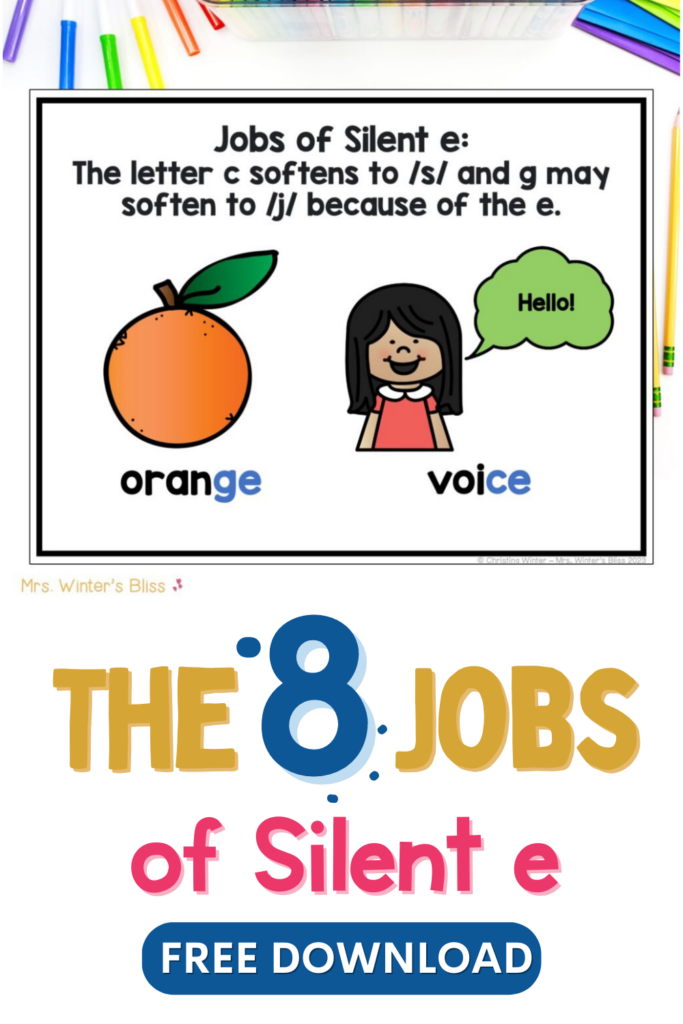
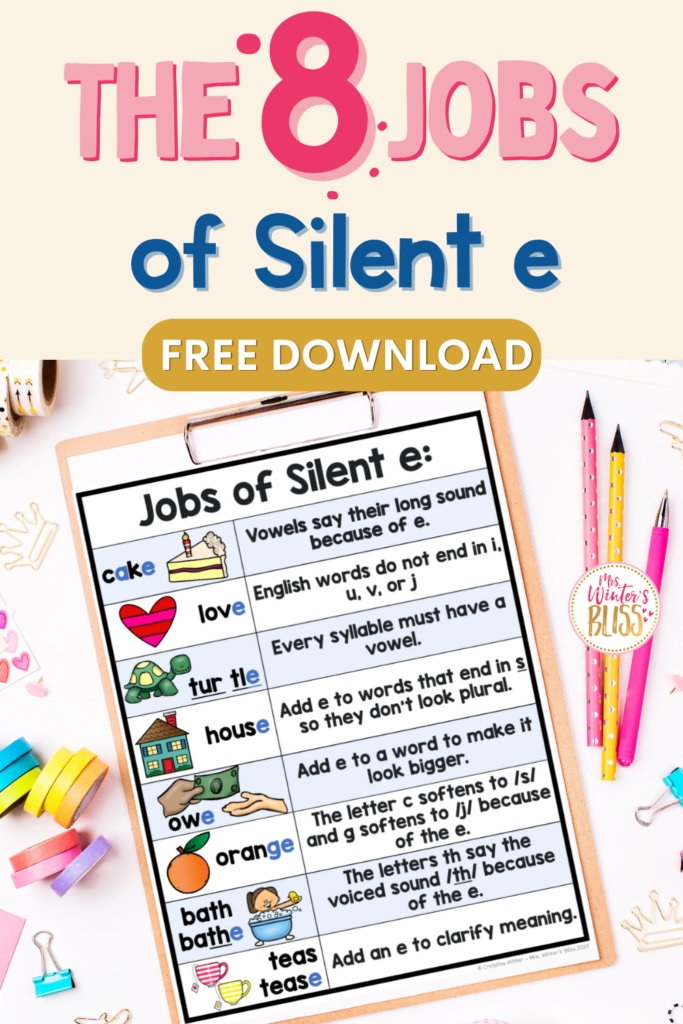
In this post, I explain the 8 jobs of silent e. Knowledge of these spelling rules will help your students become better readers and writers. Finally, I leave you with a free Jobs of Silent e teaching poster for your classroom and information about a phonics guidebook that will help provide you with explanations of common English spelling patterns.
Studies find that the more a teacher understands how English spelling works, the more likely it is that students will improve their spelling and decoding. Many of us never learned these rules in our pre-service training. This is why I’ve become passionate about sharing this important information with teachers!

In recent blog posts, I shared definitions of phonics terms and explained phonics spelling rules. Today I want to dig a little deeper into one of the most commonly taught spelling rules….the spelling rules for silent e.
I’ll explain the 8 different jobs of silent e and leave you with a FREE “Jobs of Silent e” teaching poster to use in your classroom!
The 8 Jobs of Silent e
Although final e is silent, it usually has a job to do. In fact, it has 8 different jobs! Knowledge of these rules will help your students grow as readers and writers. Let’s take a closer look at each so you can explicitly teach them to your students….
- Silent e makes a vowel long. This is one of the most common phonics rules. It is often referred to as “Magie e”, “Silent e” or the“vowel-consonant-e” pattern.

- English words do not end in i, u, v or j. The e at the end of the words such as have, love, pie, or true does not affect the pronunciation. It is there because words cannot end in i, u, v or j.
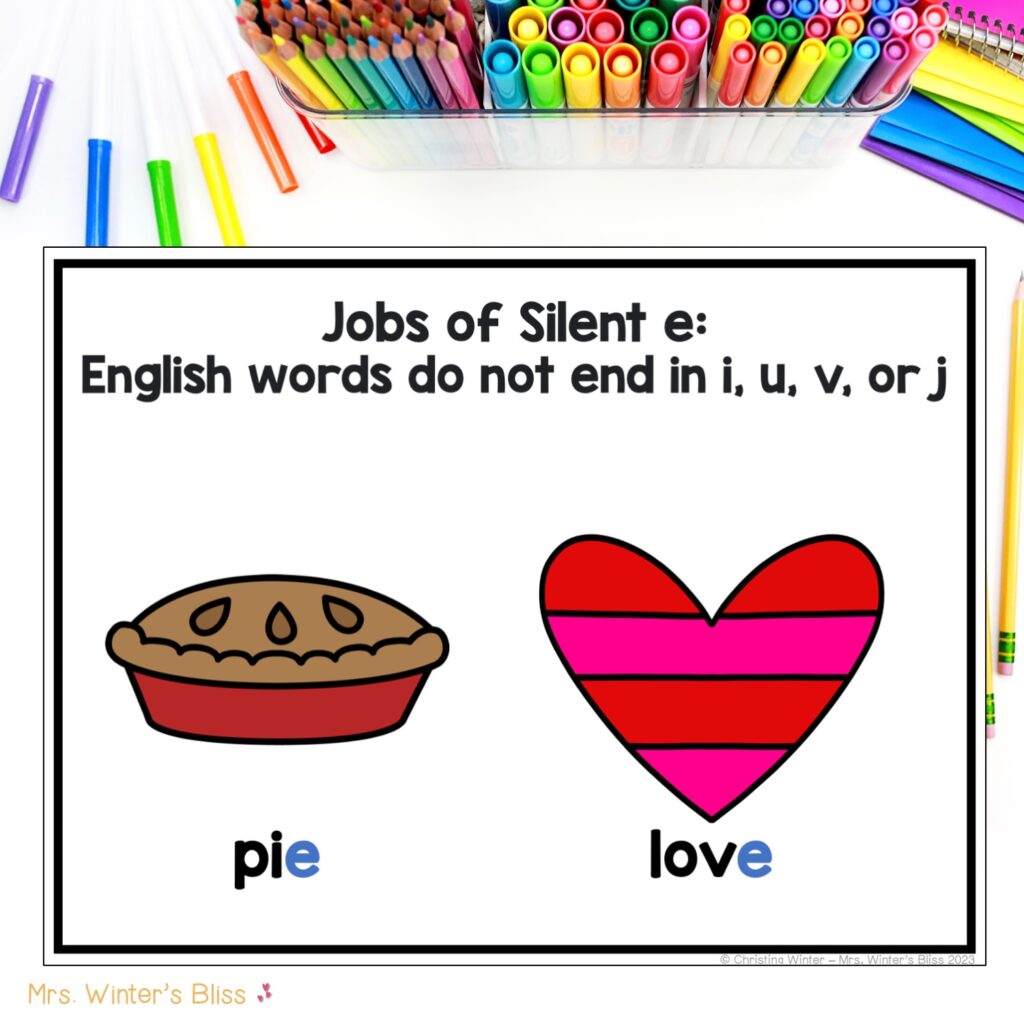
- The letter c represents /s/ and the letter g represents /j/ when followed by e. The e “softens” their sounds. For example, if the word “force” did not have an e at the end, it would be “forc”. “Change” would be “chang”.
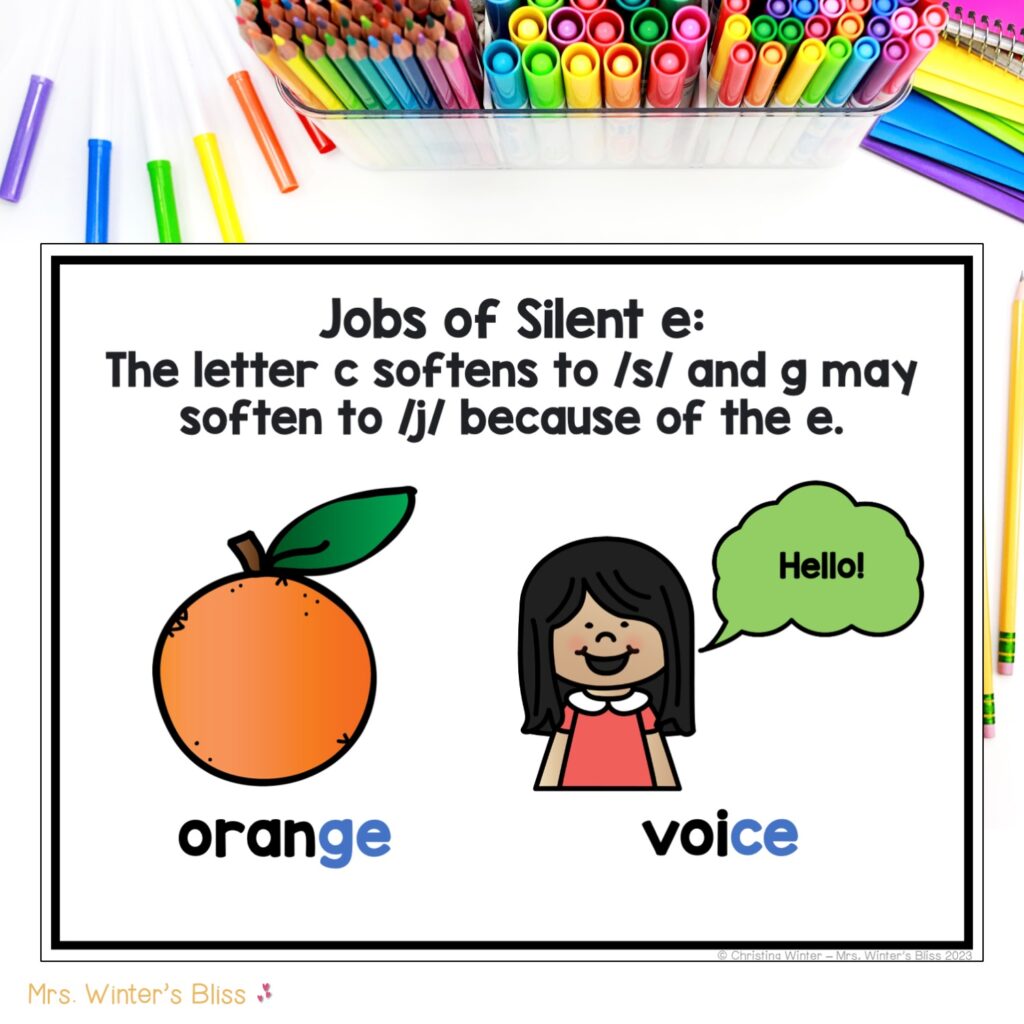
- A silent e may be added to words that end in the letter s so they do not look plural. Examples include: nurse, house, goose
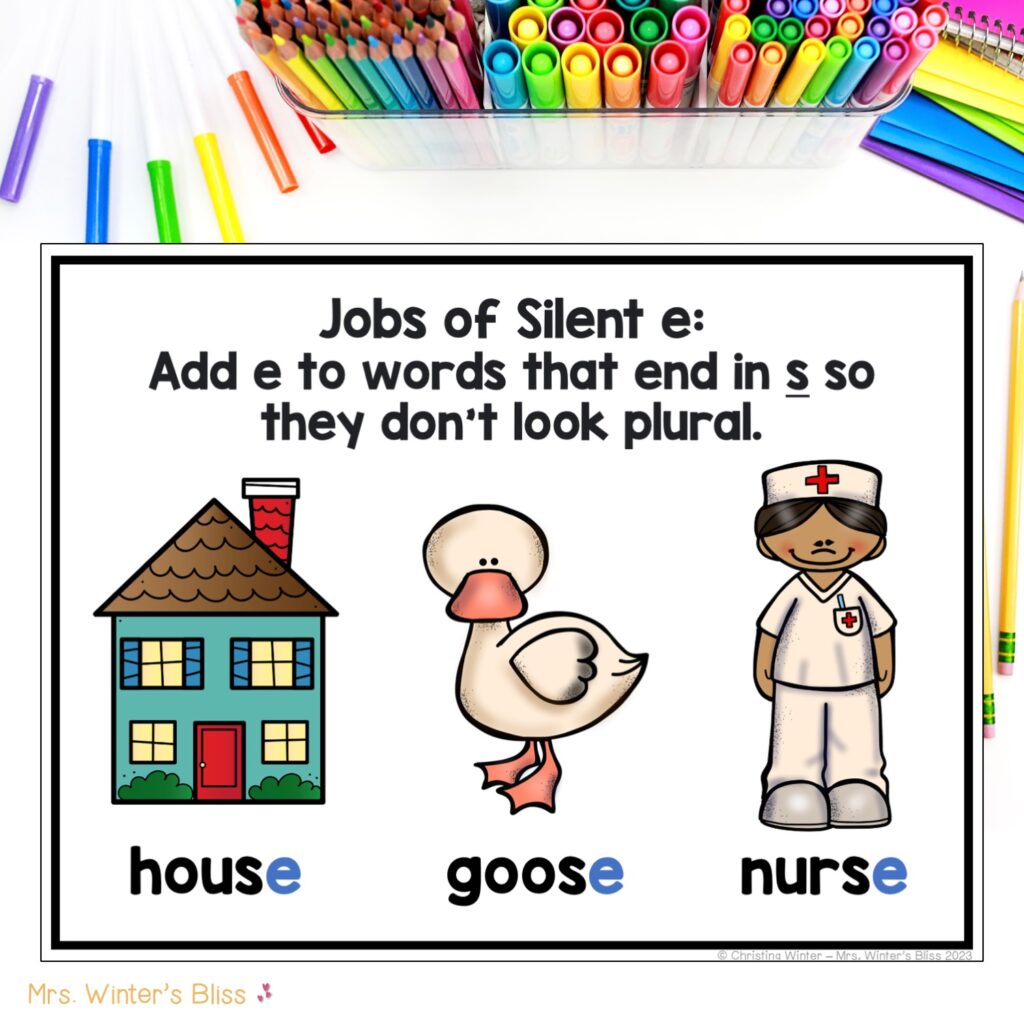
- Silent e may be added to make a word look bigger. Examples include: awe, wee, are, rye
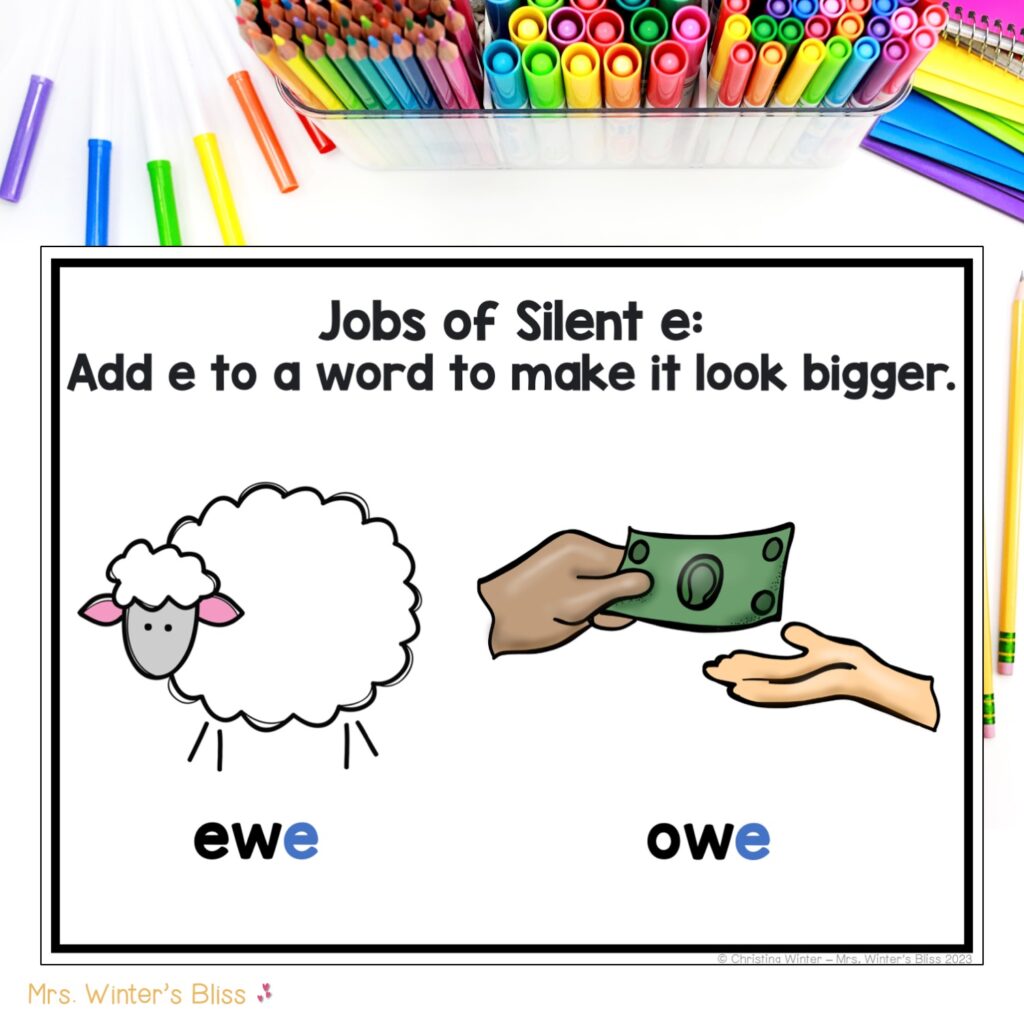
- Voice /th/ is sometimes followed by final e. Examples include: bathe, breathe, clothe

- Every syllable must have a vowel. While the final syllable can be pronounced without a vowel, in English, every syllable must have a vowel so we add the e. For example bi/cy/cle, tur/tle
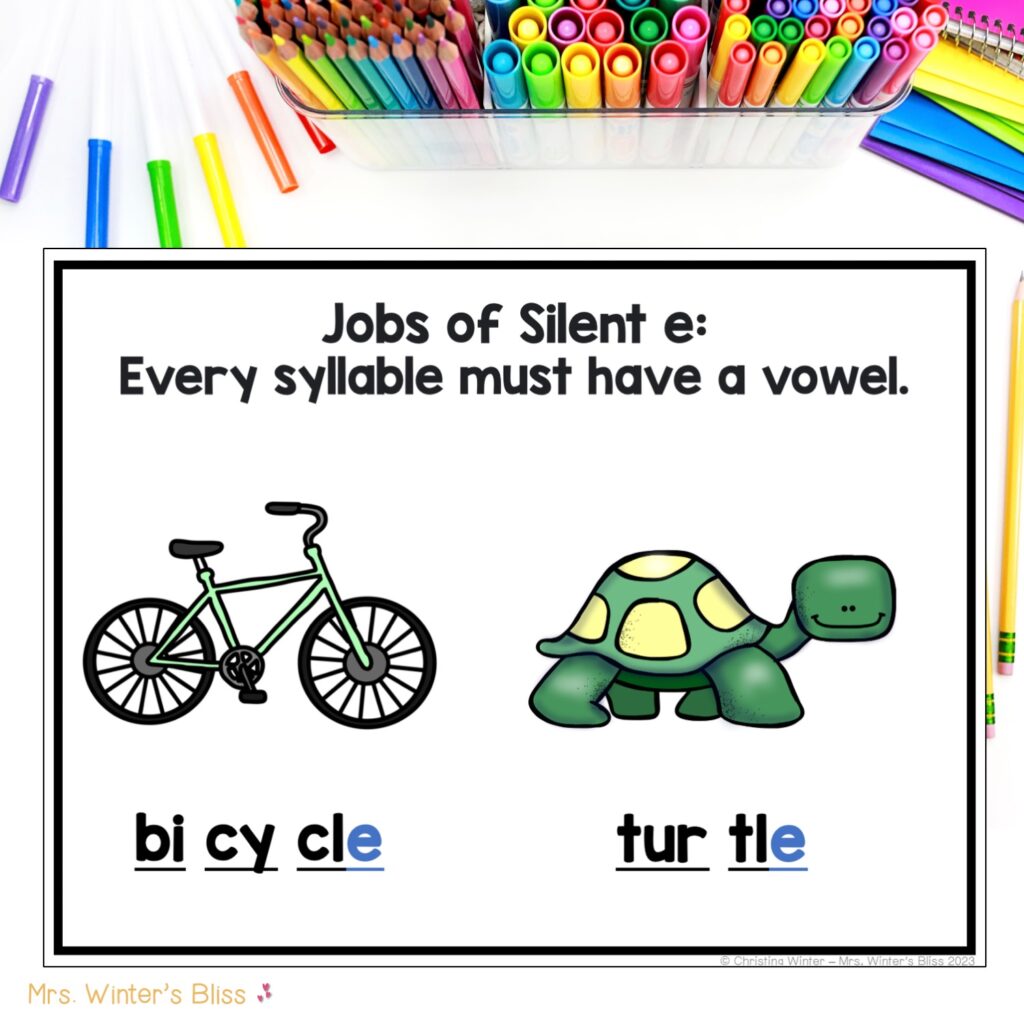
- An e may be added to a word to clarify its meaning. For example: by/bye teas/tease
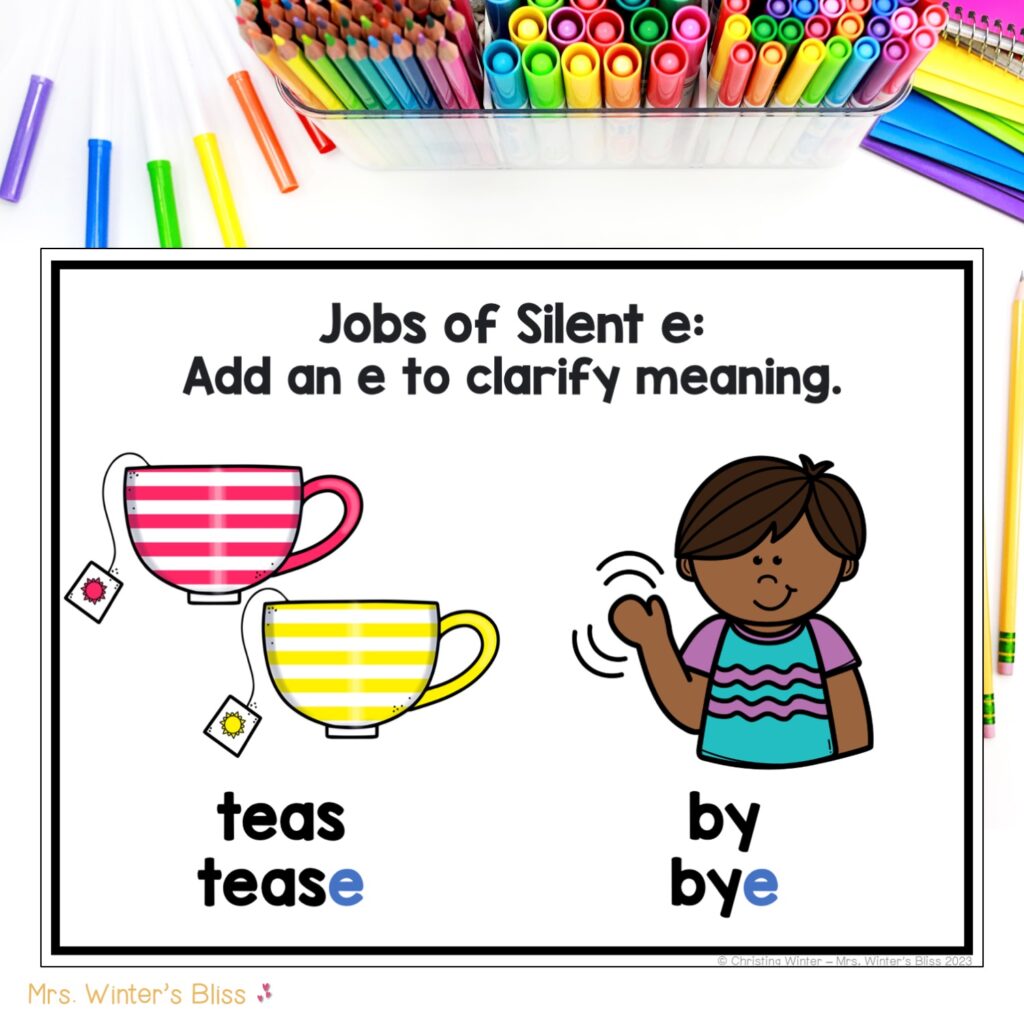
FREE Jobs of Silent e Teaching Poster
Backed with this information, I hope you now feel empowered and eager to teach ti to your students!
To get you started, I am happy to share this FREE Jobs of Silent e Teaching Poster.

Drop your email below to instantly receive this Jobs of Silent E download!
My Phonics Rules Guidebook
Curious to learn explanations of other common phonics spelling rules? If so, my phonics rule guidebook is the perfect resource for you.

This research-based resource builds teacher knowledge of phonics spelling pattern generalizations. As always, there are some exceptions to each spelling pattern, and you’ll also find those in this guidebook. Simply print the guidebook and place it in a three-ring binder for easy reference throughout the year!
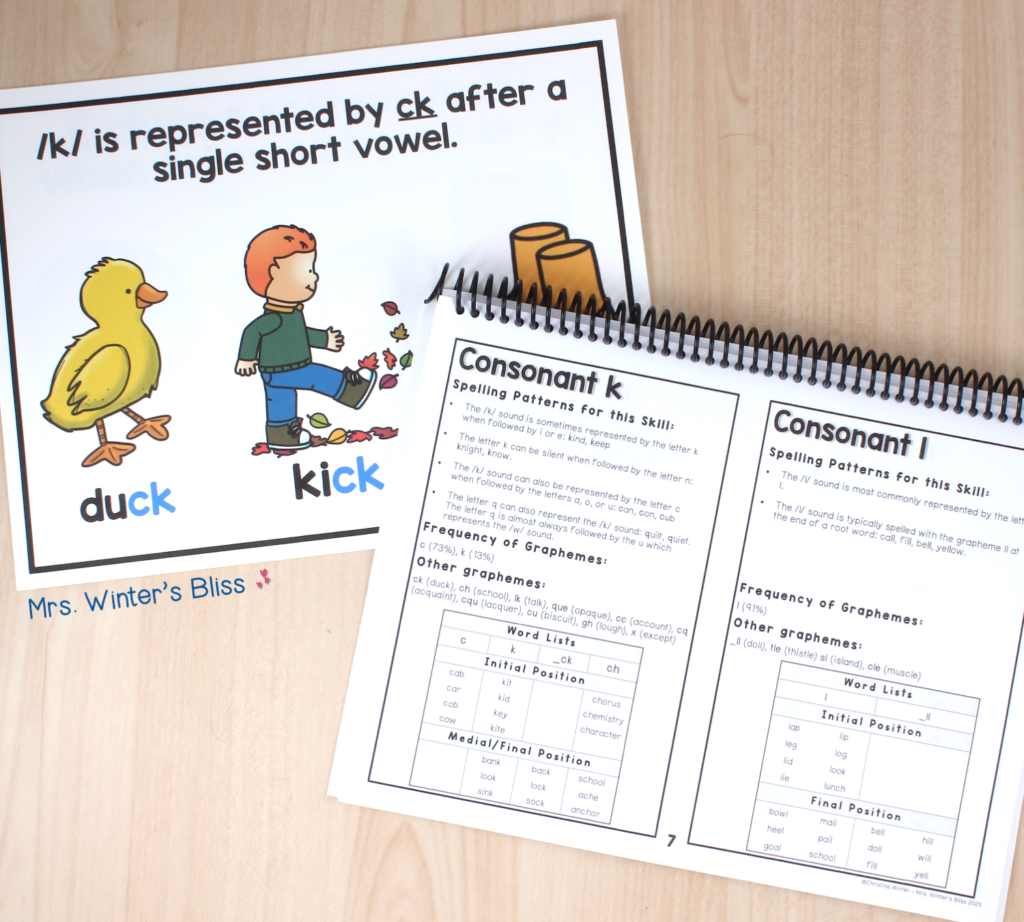
This guidebook is divided up by phoneme (sound). Each phoneme information page includes:
- spelling pattern generalizations
- the frequency of common graphemes
- other less frequently used graphemes
- a sample word list
- printable teaching posters for some of the most commonly taught spelling patterns!
You can take a closer look at the phonics guidebook and posters here.
-
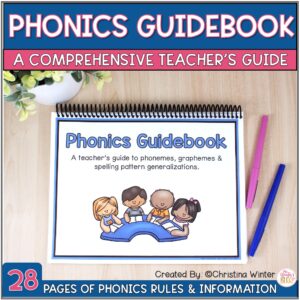 Phonics Guidebook – Phonics Rules and Teaching PostersEarn 0 Reward Points
Phonics Guidebook – Phonics Rules and Teaching PostersEarn 0 Reward Points
$14.00Rated 4.78 out of 5 based on 9 customer ratings
I hope the information and free resources I have shared here today will help you to provide your students with the explicit spelling instruction they need to be successful readers and writers!









